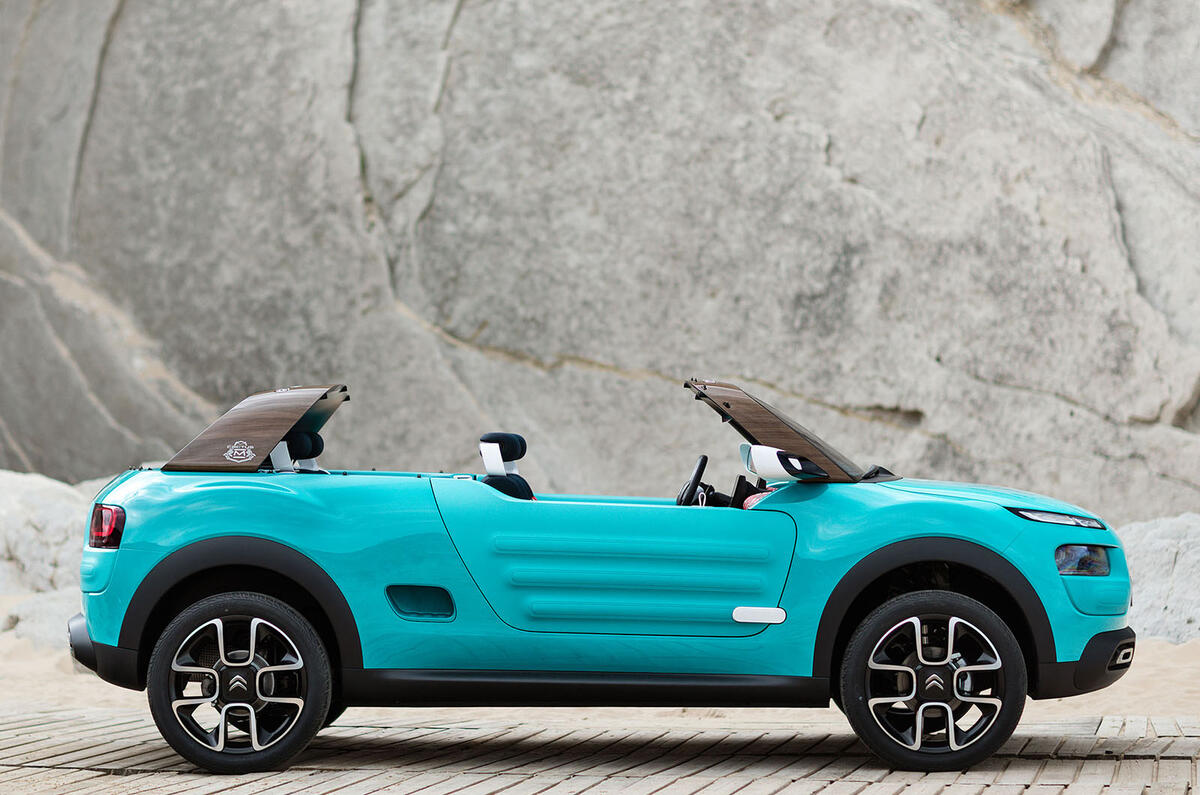The Cactus M is the latest evidence of Citroën’s push to make its cars simpler. This is something started by the production C4 Cactus and likely to continue onto other models in the future.
This move towards simplicity is something that the Cactus M’s designer, Frédéric Duvernier, says is possible in part due to the splitting of Citroën and DS into separate brands. With DS concentrating on making premium models, it allows Citroën to strip out unnecessary parts from its future models and keep them basic. It doesn’t mean a removal of all technology from a car. Safety equipment can be kept hidden, says Duvernier, while in-car tech can be left to smartphone manufacturers.
“Everything is too complicated,” he said. “I think we can make a simple shell and not fill it up with gimmicks and technology.”
He says young colleagues, for example, are all buying older, simpler cars rather than more complicated modern ones.
The simple approach is not likely to be something restricted to smaller models either, with Duvernier even talking about taking unnecessary and overly complicated bits out of models such as the C4 Picasso.
But neither does the plan mean an end to the larger Citroëns such as the C5 “I believe there is a way to make a really nice flagship for Citroën,” Duvernier added. “It will be very interesting. If you look back at the CX from the 70s - it was a huge success.”
This represents quite a shift from the recent past. As recently as 2008, Citroën launched the C5 with a marketing campaign that looked to align the car closely with its German rivals. It was styled to look like them, with sharp creases along the side. The only real head-nod to its flamboyant, French heritage was a choice between standard steel suspension or air suspension.
Even though it was not a bad car, the C5 certainly lacked some of the charm of the likes of the CX and other similar models from company’s range in the 1970s. Given that the C5 was not a roaring success in terms of its sales, a return to a self-confident Citroën range that makes the most of its heritage would be a welcome one. The Cactus, and Dacia’s low-frills approach, has shown that not every buyer wants a cabin packed with kit.
“The feel-good factor is one of the key things,” said Duvernier. “There are plenty of mainstream cars that look alike. With our nice history we can offer something different by being colourful and joyful and feel-good.”
The Cactus may not be to everyone’s taste, but Citroen seems happy with that.




Join the debate
Add your comment
How can this work
Lease deals
If the second hand market is prepared to pay more for simple, high quality cars with less to go wrong then that reduces the depreciation and Citroen can increase profits on new cars whilst offering competitive lease rates.
Of course, the typical three year old car buyer doesn't necessarily want the same as the typical seven year old car buyer. If they do go down this path I wouldn't be surprised to see them encouraging five or seven year lease deals.